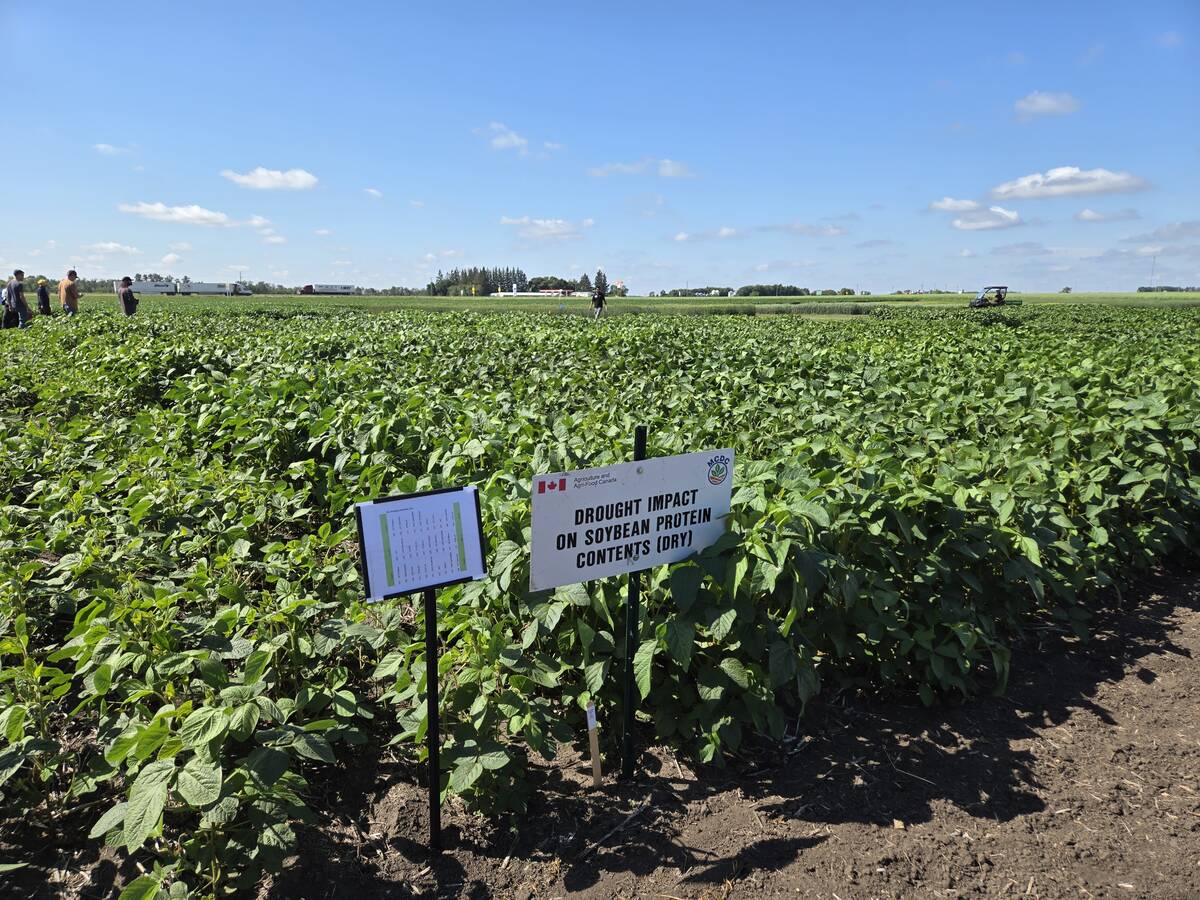A weekend snowstorm is just the beginning of what some weather forecasters expect to be a damp spring.
The storm delivered 20 to 35 centimetres of snow in many areas of eastern Alberta and western Saskatchewan, creating headaches for cow-calf producers and pushing back seeding for some grain farmers.
One meteorologist believes there is more of the same in store for at least half of the prairie region.
“It’s not a pretty picture. I fully expect to see some planting delays of significance to take place,” said Drew Lerner, president of World Weather Inc.
Read Also

Carberry field day looks for agriculture solutions
Manitoba farmers explored research solutions for resilient crops, perpetual agronomic issues and new kinds of agricultural products at a field day at the Manitoba Crop Diversification Centre in Carberry on Aug. 6.
His April 15 to June 15 outlook shows cooler and wetter than normal conditions for Manitoba and southeastern Saskatchewan.
The same 60-day forecast calls for normal precipitation and temperatures for Alberta as well as central and southeastern Saskatchewan.
“The rest of the Prairies will do fairly well,” he said.
Due to the wet conditions, Lerner anticipates fieldwork to advance slowly in the eastern prairie region and advised producers to jump on any period of warm and dry weather because the outlook calls for a repeating pattern of storms moving through the eastern half of the Prairies.
“If I was a producer out there I would certainly be considering looking for something that would be a shorter term variety,” he said.
Bruce Burnett, director of weather and crop surveillance with the Canadian Wheat Board, said that might be jumping the gun a bit.
He also believes the first half of spring will be wetter than normal, but that would be welcome news for producers south of the Trans-Canada Highway, where it is dry in many areas of Saskatchewan, Alberta and southwestern Manitoba.
However, he doesn’t believe there will be enough rain or snowfall to cause significant seeding delays in those regions.
Burnett is more concerned about north-central and northeastern Saskatchewan, where there was significant snowpack on top of already saturated soil.
Producers in those regions are the ones who should contemplate a shift to shorter-season crops, not the growers in the south, said Burnett.
He doesn’t place much faith in any forecast that extends beyond a few weeks, noting that it should have been wetter than it was across the southern grain belt this winter had the long-term forecasts come true.
Lerner acknowledged that any long-term forecast is a crapshoot, but there are a number of weather indicators that line up in agreement on this one.
“We go to a lot of trouble to try to find patterns that overlay one another so hopefully we’ve got a fairly good handle on this,” he said.
Lerner doesn’t generally attach confidence factors to his forecasts but if he was forced to, he would say there is a 60 percent chance for a wetter and colder than normal spring in the eastern Prairies.
“This has been my forecast for the region since February and I have not deviated from it. I have not seen anything yet that would suggest to me this will not come to fruition.”
That said, he would never advise a producer to make planting decisions based solely on a long-range forecast. Each individual has a better idea of what to expect in his area.
Environment Canada is not forecasting a wet spring. The agency expects near to below normal conditions across southern Alberta and Saskatchewan and near normal in southern Manitoba and central Saskatchewan and Alberta.















